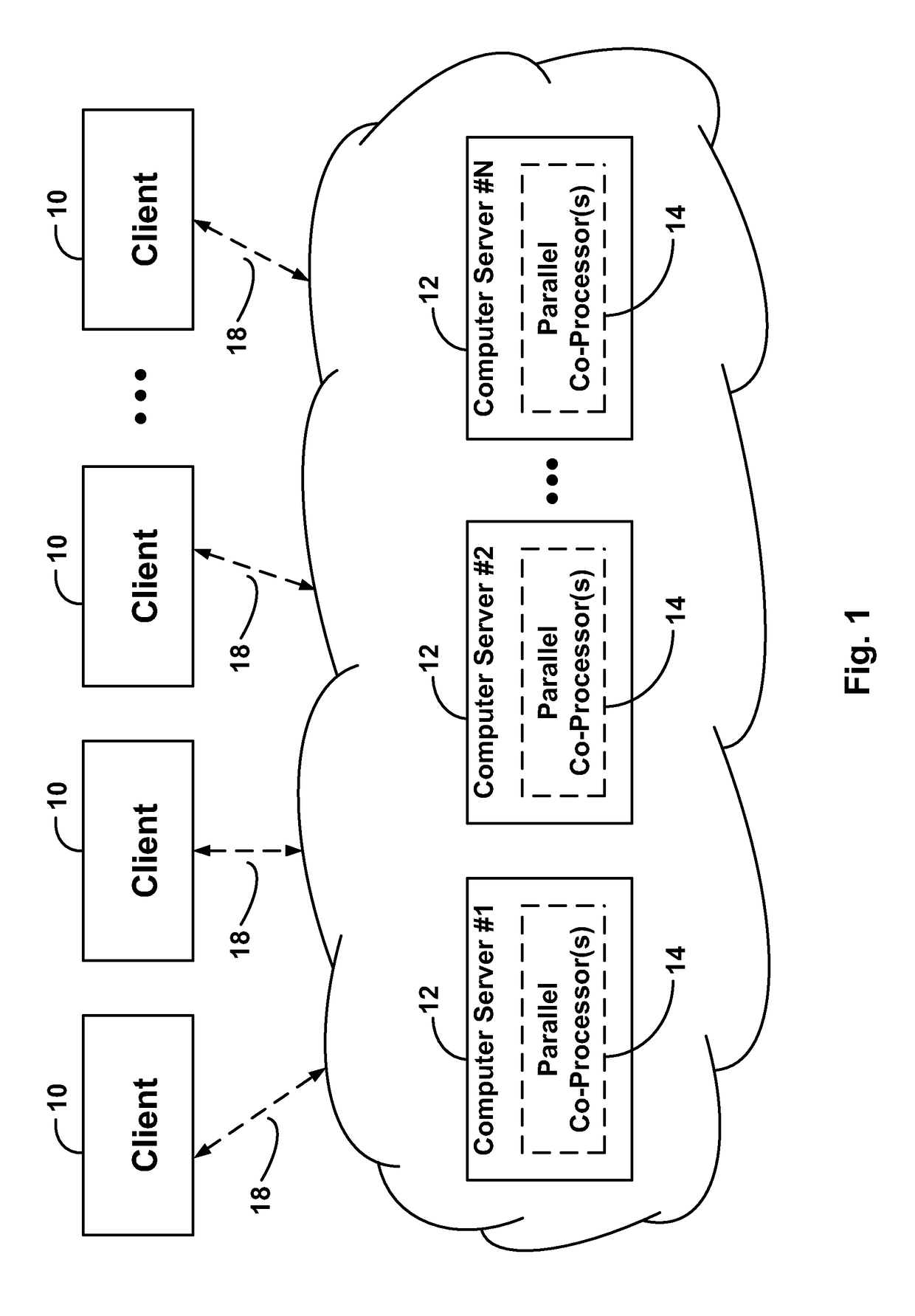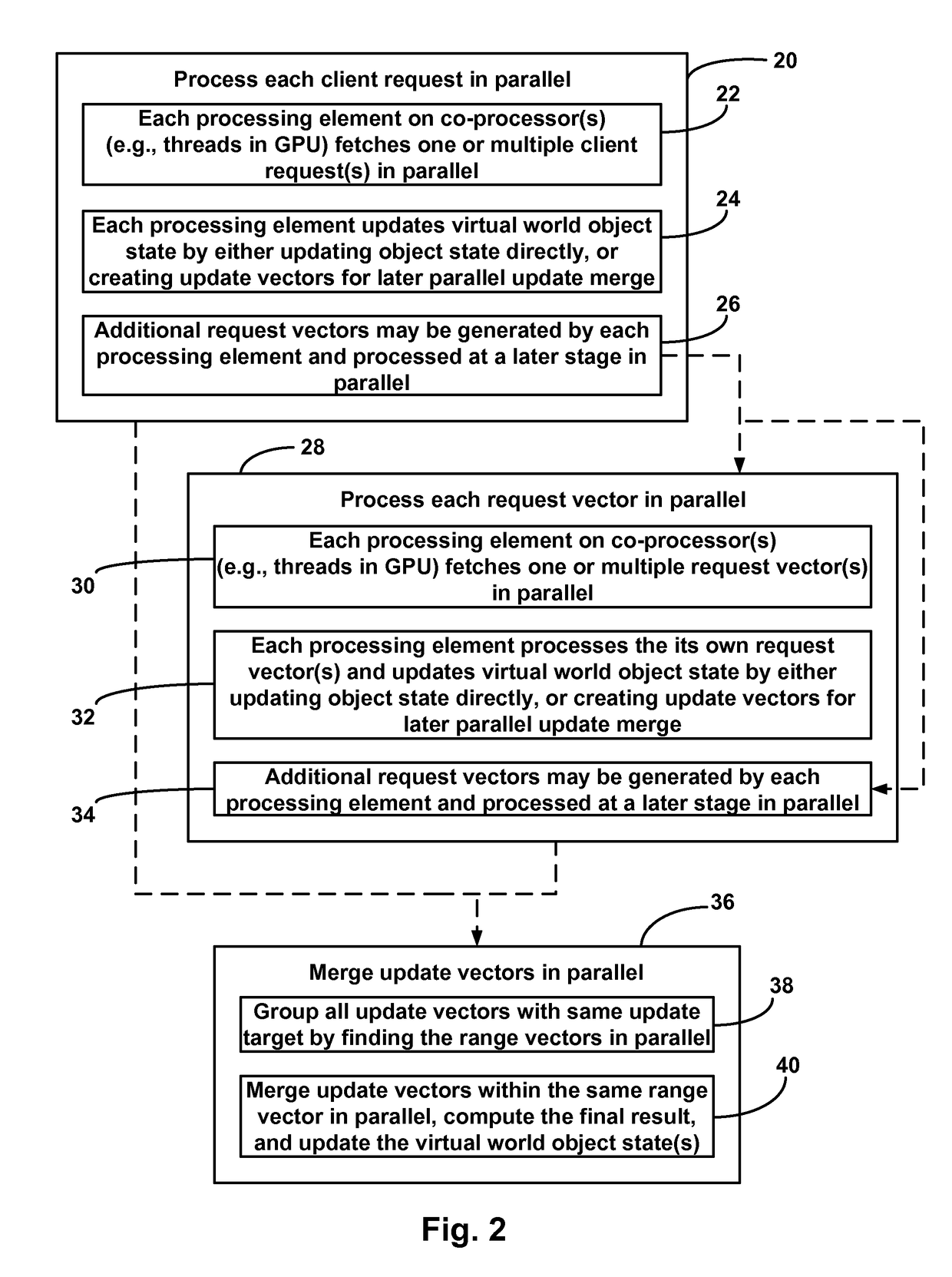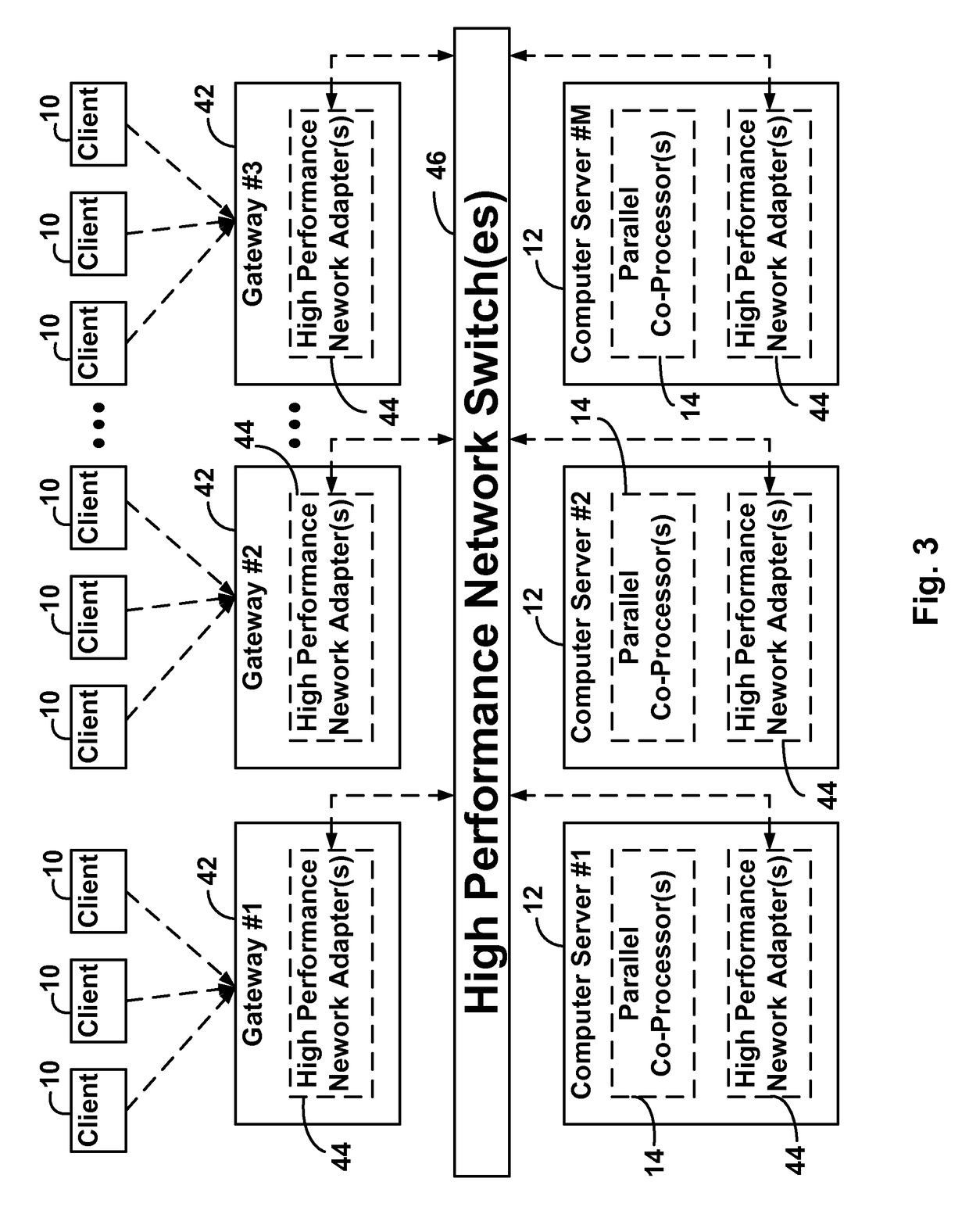Virtual world simulation systems and methods utilizing parallel coprocessors, and computer program products thereof
a virtual world simulation and coprocessor technology, applied in the field of virtual world simulation systems and the, to achieve the effect of accelerating virtual world simulation, effectively addressing and alleviating performance bottlenecks
- Summary
- Abstract
- Description
- Claims
- Application Information
AI Technical Summary
Benefits of technology
Problems solved by technology
Method used
Image
Examples
Embodiment Construction
Graphics Processor Unit (GPU)
[0055]As mentioned above, the GPU technology changed a lot in both hardware and software in the last decade. In hardware, fixed-function rendering pipeline is obsolete and new programmable pipeline consist of multiple SIMD processor is a de facto standard in the GPU industry. The comparison of computation power between GPU and CPU was depicted as FIG. 7. As for software, the OpenGL® persists, but many extensions have been added by the OpenGL® ARB to facilitate the use of programmable pipeline. Based on the programmable pipeline and the SIMD architecture of current GPU, one can map a compute-intensive problem into multiple small pieces, solve the problem within a pixel-rendering context (because the pixel rendering is programmable), and finally store the result in the frame buffer object. This is the basic concept of general purpose computation on graphics hardware, also called GPGPU.
[0056]However the mapping is not straightforward, we may need to design ...
PUM
 Login to View More
Login to View More Abstract
Description
Claims
Application Information
 Login to View More
Login to View More - R&D
- Intellectual Property
- Life Sciences
- Materials
- Tech Scout
- Unparalleled Data Quality
- Higher Quality Content
- 60% Fewer Hallucinations
Browse by: Latest US Patents, China's latest patents, Technical Efficacy Thesaurus, Application Domain, Technology Topic, Popular Technical Reports.
© 2025 PatSnap. All rights reserved.Legal|Privacy policy|Modern Slavery Act Transparency Statement|Sitemap|About US| Contact US: help@patsnap.com



